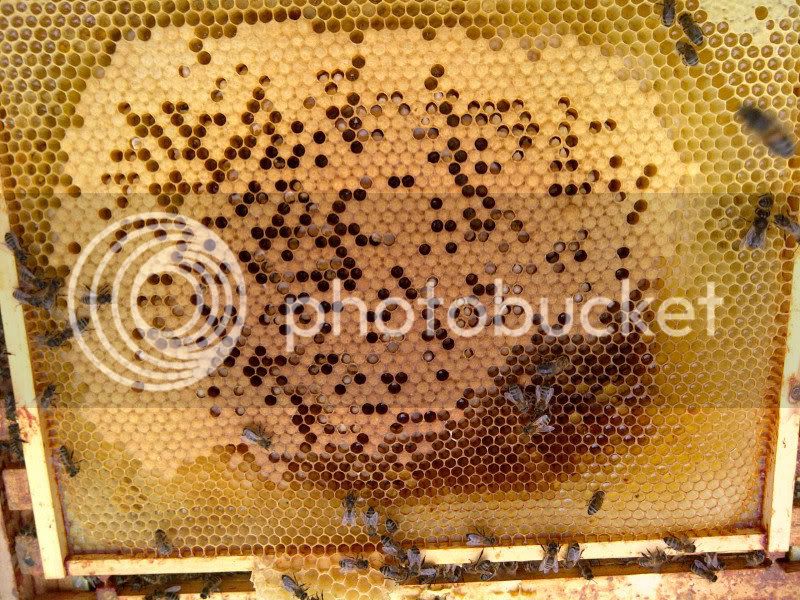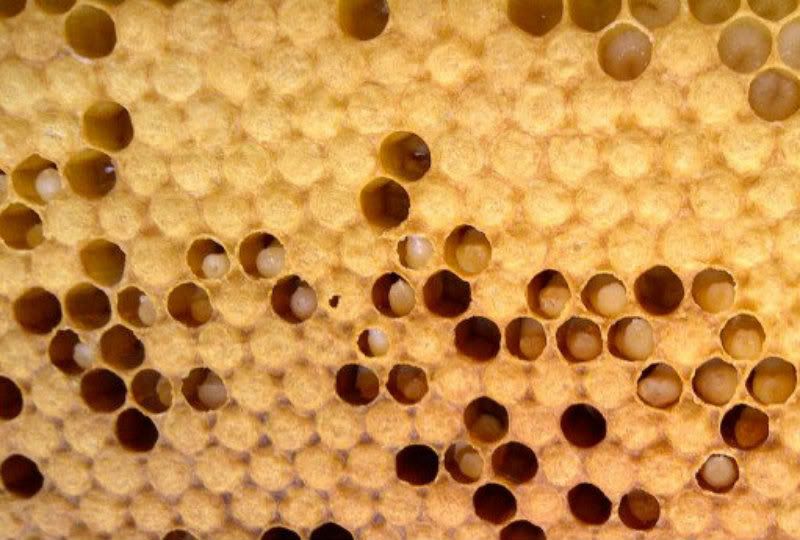taff..
Field Bee
- Joined
- Dec 25, 2008
- Messages
- 796
- Reaction score
- 0
- Location
- By that there Forest
- Hive Type
- National
- Number of Hives
- 4
this is a colony that is headed by last years queen and overwintered ok (ish) on their own stores.
at the beginning spring there was a little bit of poo staining around the enterance, but not so much that I was really worried, there was nothing on the frames or inside if the broodbox and they were slower than my other colony to build up, but the queen was laying,
last inspection was on the 5th May and the brood pattern was a bit spotty, but the cells that were the spots were empty, today we have this....


I've searched here and google images and it looks to be consistent with sacbrood, if you've dealt with sacbrood before would you agree?
I understand the cure is requeen from other stock, so thankfully that's quite easy
at the beginning spring there was a little bit of poo staining around the enterance, but not so much that I was really worried, there was nothing on the frames or inside if the broodbox and they were slower than my other colony to build up, but the queen was laying,
last inspection was on the 5th May and the brood pattern was a bit spotty, but the cells that were the spots were empty, today we have this....


I've searched here and google images and it looks to be consistent with sacbrood, if you've dealt with sacbrood before would you agree?
I understand the cure is requeen from other stock, so thankfully that's quite easy



